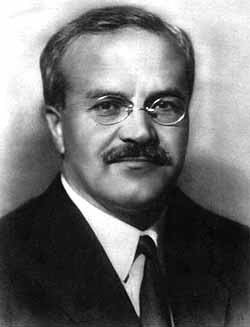 | ||
The Molotov Plan was the system created by the Soviet Union in 1947 in order to provide aid to rebuild the countries in Eastern Europe that were politically and economically aligned to the Soviet Union. It can be seen to be the USSR's version of the Marshall Plan, which for political reasons the Eastern European countries would not be able to join without leaving the Soviet sphere of influence. Soviet foreign minister Vyacheslav Molotov rejected the Marshall Plan (1947), proposing the Molotov Plan – the Soviet-sponsored economic grouping which was eventually expanded to become the COMECON. The Molotov plan was symbolic of the Soviet Union's refusal to accept aid from the Marshall Plan, or allow any of their satellite states to do so, because of their belief that the Plan was an attempt to weaken Soviet interest in their satellite states, through the conditions imposed, and by making beneficiary countries economically dependent on the United States.
The plan was a system of bilateral trade agreements which also established COMECON to create an economic alliance of socialist countries. This aid allowed countries in Europe to stop relying on American aid, and therefore allowed Molotov Plan states to reorganize their trade to the USSR instead. The plan was in some ways contradictory however, because at the same time the Soviets were giving aid to Eastern bloc countries, they were demanding that countries who were members of the Axis powers pay reparations to the USSR.
